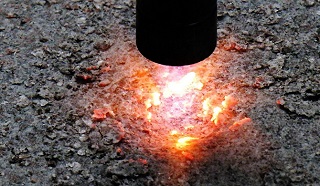From Guest Blogger Diana Smith: LED Lighting as a Sustainable Choice

Longer lifespan
One of the biggest selling points of LED lights is the longer life expectancy: despite the fact that they are significantly more expensive than your typical halogen units, the LEDs have more than something to brag about: they last much longer than your regular lights; long enough to pay off in the long run.
Additionally, the halogen lamps evidently require more frequent replacement, meaning that the LEDs guzzle fewer resources during the manufacturing process, but also in terms of packing materials and transportation needs. Lower carbon emissions and less frequent replacement needs are opposed only by the fact that homes with improperly installed wiring might cut the life of a typical LED bulb. However, this is a problem that needs to be addressed regardless of the fixture type you opt for.
More energy efficiency
About 95% of energy in LED lights is converted into light, leaving only around 5% wasted on heat, which is a polar opposite when compared to the fluorescent lights that convert as much as 95% of energy into heat, leaving only about 5% for light! Australia is all about less heat and more lighting.
The LEDs are 80% more efficient than incandescent and fluorescent lights; they draw much, much less power than the traditional options; where a typical fluorescent bulb is 84 watts, the same level of lighting is achieved with an LED’s 36 watts! Essentially, this means less energy use, which further means reduced demand from power plants, which leads to the greenhouse gas emission decrease. Combined with their lifespan characteristics, the LED lights are really an amazing choice.
Superior light distribution
Now while better light distribution might seem like a purely functional characteristic, bear in mind that this means less need for more lighting fixtures. Given the LEDs’ property of focusing light in a specific direction, they illuminate only the areas where light is required, while the fluorescent and incandescent lights unnecessarily waste energy on lighting up the trivial areas, such as the ceiling. This essentially means that fewer LED lights are required to achieve the same amount of illumination in comparison to more typical lighting fixtures. This reduces energy consumption even further, which is essential for our environment, in Australia and worldwide.
Of course, fixture placement is a crucial factor here, so we suggest getting in touch with your trusted electrician in Brisbane to discuss smart placement options.
Better quality and safety
Lighting quality plays a key role, both in indoor visual satisfaction and in terms of sustainability. Well, the LED bulbs excel at lighting quality – the light they emit is pretty much as close as possible to sunlight; it makes reading easy and it’s perfect for kitchens, bathrooms and other dimly-lit rooms.
Given the fact that the LED bulbs, as mentioned, produce much less heat than their unsustainable counterparts, the risk of fire is reduced, especially in Australian cities, where the summers are hot and winters generally warm.
A longer lifespan, more energy efficiency, better light distribution, superior quality and increased safety should be enough to make everybody realize how much benefit the LED lighting brings to the table. The fluorescent and incandescent lights are already well past outdated, so going LED will soon become unavoidable.
